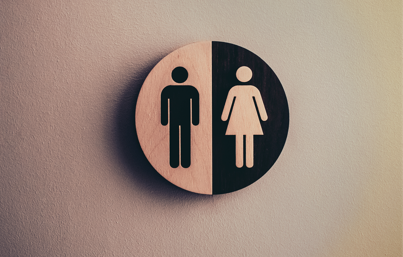While ACoP welcomes the milestone achieved on all ASX 200 Boards now having at least 1 member who is female, there is still much work to be done to embrace and include the richness of diversity to which Australian society and businesses should have ready access. So we’re not quite ready to pop the champagne just yet!

The celebration of this milestone is sadly diminished by the fact that, on the point of gender diversity on boards, women still hold only 30% of positions while just over 43% of ASX 200 companies have not reached even that level of gender participation.
Women are encouraged to build their board portfolio by volunteering on not-for-profit boards. What is not emphasised in this commitment is that women appointed to director positions in NFPs take on the same financial and reputational risks in not-for-profit non-remunerated roles as they would if they were appointed to the more highly prized and remunerated ASX 200 Board roles.
ACoP Head of Professionalism and Ethics Dr Ruth Ferraro highlights that “Given the gender pay inequality, the time out of the workforce that diminishes their superannuation balances it might be further imprudent for women to undertake these voluntary roles as a ‘rehearsal’, work experience program, thereby exposing themselves to more financial risk”.
Equal Pay Day 2021 – will we move the dial by 12 April 2022?
Meanwhile, 31 August 2021 marked Equal Pay Day, but unfortunately there was nothing equal about it. In fact, the situation is waning. The Workplace Gender Equality Agency (WGEA) announced the gender pay gap had gone up by 0.8% compared to the previous six months and now sits at 14.2%. The disparity equates to a gap of $261.50 per week between women and men and a total of just over $13,000 in the last financial year. Put simply, this equates to 61 extra days women in Australia must work on average to receive same pay as men 2.
ACoP Head of Diversity, Culture and Inclusion Angelina Pillai is also one of the leaders in the construction sector, as the part-time CEO of the Association of Consulting Architects. “I know firsthand that many of those in male-dominated construction jobs had the good fortune of keeping their businesses well and truly operating as the construction industry propped up our economies during the pandemic, with many of these workers holding on to their jobs. Women however, suffered disproportionate job losses as the burden of childcare, home duties and remote schooling fell on them, whilst their male counterparts continued employment where able, supporting their households and families. As a result, women are slipping further down the chain of workplace promotion, visibility, salary raises and pay rates”, she observed.
And this is hitting hard, especially in the leadership space. A survey by Chief Executive Women found that no female CEOs were appointed to ASX 200 companies in 2021 3. One of the biggest problems noted was the lack of women in major operational jobs. As women step further down the promotional ladder, they are finding it harder to climb back up as most appointments for CEO roles are made to those already in the leadership C-suite pipeline.
A Double Whammy?
But as a culturally and linguistically diverse (CALD) woman herself, Pillai notes that the gap is far wider for this cohort, especially when it comes to leadership positions. Research published by the Diversity Council of Australia in partnership with the University of Sydney Business School, Google, Aurecon, Commonwealth Bank and Deloitte, Cracking the Glass-Cultural Ceiling: Future Proofing Your Business in the 21st Century (2017) 3, underlined just how unseen CALD women really are when it comes to leadership opportunities. Whilst there have been some positive shifts in recent years, the research goes on to highlight how the interests and needs of culturally diverse women are falling between the cracks because “in the CALD space, CALD men dominate, while in the gender equality space, Anglo women dominate”, resulting in a double jeopardy for CALD women (Diversity Council of Australia, 2017) 5.
So how do we collectively close the gap?
It’s never too late to increase diversity and equality across the professional landscape. As members of a professional alliance, we have an immense opportunity to shift the pendulum of change in the right direction with collective action.
Professionals are governed by codes of ethics and profess commitment to competence, integrity and morality, altruism and the promotion of the public good within their expert domains. They are accountable to those they serve and to society. Therefore this is a call to action for each professional to think about the difference they can make in their profession. Every professional should ask themselves how they are addressing the issue of gender, pay rates and the leadership of women, what part they play in addressing this issue, how they can be an advocate and most critically, what their professional organisation can do to support their efforts.
ACoP will be presenting a Roundtable event in early 2022 on the issue of ‘Gender Deafness’ so stay tuned as we discuss, debate and engage in healthy discourse with our member organisations about how to enable change.
We invite all who are not members of ACoP to join our alliance of Professional Organisations as we work collectively to uphold the integrity of gender parity and the contribution it makes to Australia’s well-being and prosperity.
For more details, ring 1300 664 587 or contact CEO@Professions.org.au.